
Lloret de Mar is a Mediterranean coastal town and resort belonging to the province of Girona and is situated on the Costa Brava.
Lloret de Mar is a popular holiday destination and is considered the heart of hangout life of the Costa Brava.
The first settlers of Lloret de Mar Iberians, who inhabited the present Catalonia around the 4th century BC.
In place of the Iberians came the Romans, who established trading links with neighbouring settlements. The first documentary mention of Lloret de Mar dates back to the year 966.
The current core of the population was formed in the fifteenth century around the beach, which was situated somewhere in a 1 kilometer from the coast. By the 16th century the city center moved to the coast.
In the 19th century, Lloret transformed, receiving a new milestone in architecture and Economics. It was the "era of Indians", during which many local residents went overseas (America, Cuba, etc.), where conducted business activity - trading, engaged in shipbuilding, etc., and then, too, returned home, but not in the old ancestral houses, and erected a new architectural building, at that time a rarity for the province Lloret architecture. According to their orders in Lloret and the surrounding area was built the Villa in the neoclassical style, modernism or eclecticism, some of which can be seen today.
Lloret as a resort started to welcome the first foreign tourists in the 50-ies of the 20 century, when the old manor house began to turn into hotels and resting places of the vineyards was urbanized, the beaches are well-kept, the building of the Central urban core were associated with buildings, beach areas, and the city has grown inland.
However, the beginning of the development of tourism in Lloret was not sudden. Before the mid-20th century, in the twenties and even earlier, in the area liked to spend summer wealthy families from Barcelona. Among the most famous holidaymakers of the era mention should be made of the famous Catalan poet Josep of Karner, who in 1919 in the journal "ací D, d allà" described Lloret de Mar with the help of the epithet "Paradise on earth".
Currently, Lloret is a popular resort, attracting visitors for its beaches, stretching for 9 miles along the coast and promenade, which is popular area for walking and recreation, an abundance of bars and restaurants, thanks to which Lloret received the status of the rave and youth of Costa Brava, and a variety of attractions and coastal paths, which previously fulfilled the functions of patrolmen ways.
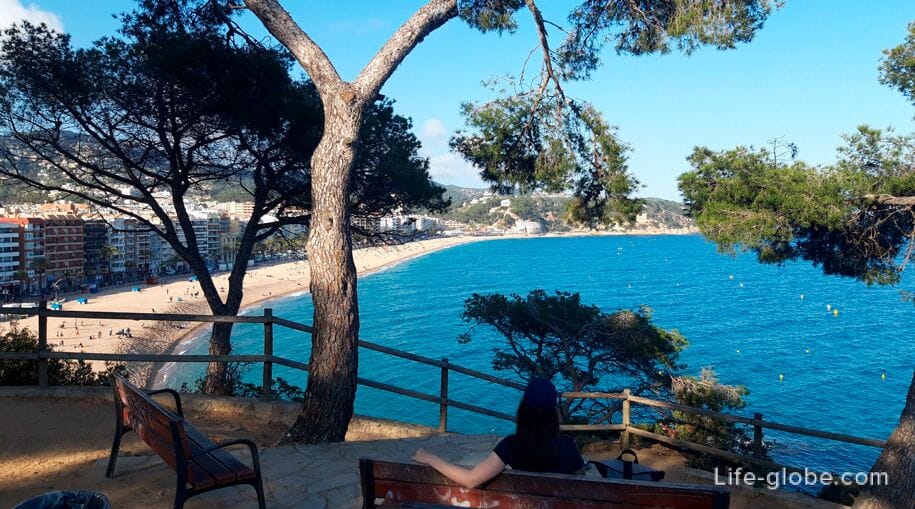
The city has six sandy beaches in the high season the beach has all the necessary infrastructure beach to enjoy the sun and the sea with total comfort.
On the beaches: deck chairs and umbrellas from the sun (average cost of 7 Euros for a sunbed or umbrella; 19,50 Euro for two sunbeds and an umbrella), showers and toilets, rubbish bins and decking for ease of movement, a beachfront café-bars and kiosks with drinks and ice cream. Also on most beaches marked places for water sports.
Lifeguards and a first aid service is available from 15 may to 15 October.
Lloret de Mar was awarded four blue flags. They have notedbeach of Lloret, Fenals beach, the Bay of Sa-Bagels and the beach of Santa Cristina.
Besides the sandy beaches, within Lloret de Mar is a rocky coast, along which is located a small Bay (semi-wild), which in season is also tourists and local residents.
Lloret - Central, longest and most popular beach resort.
The beach is over a mile away, and its average width is 45 meters.
The Lloret beach is located in the heart of the city.
Along the beach along the promenade (boardwalk) is one of the popular places for walking and recreation.
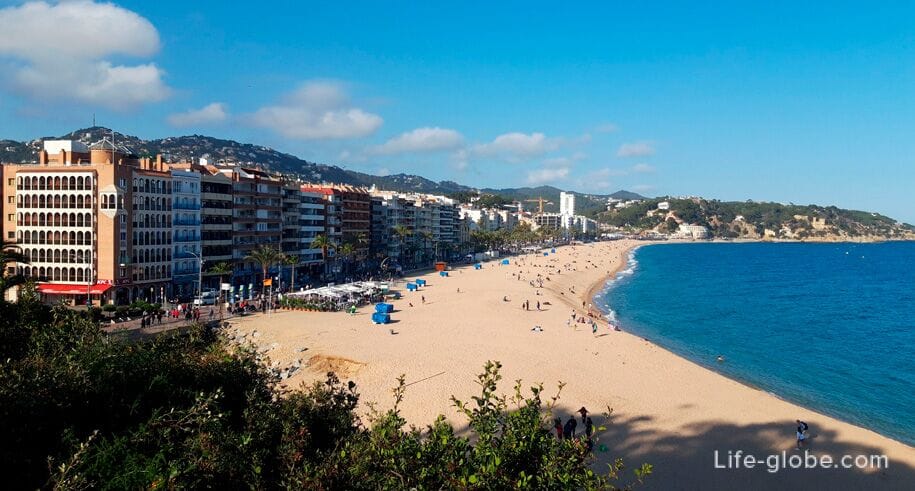
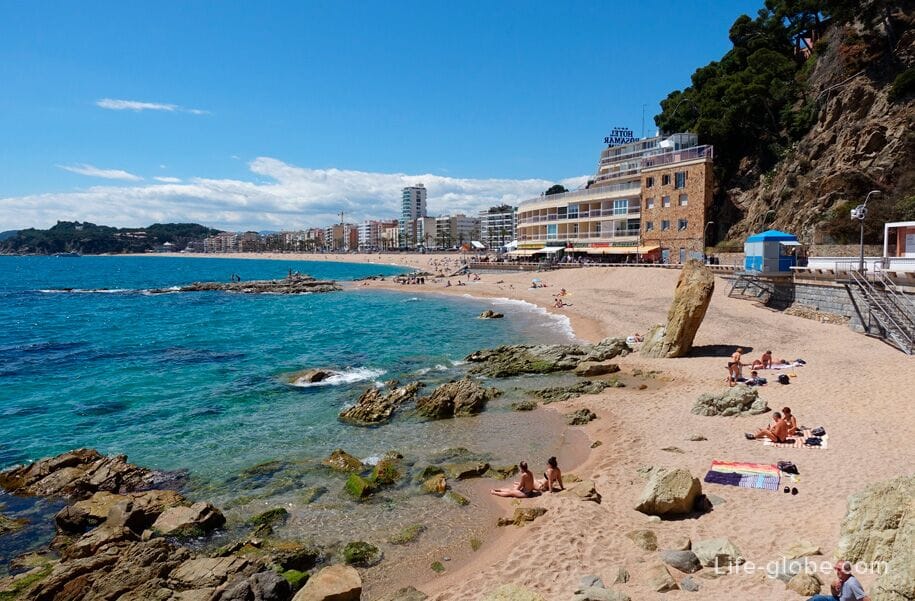
Sa Caleta beach is a small Cove located in the resort center, near the Central beach of Lloret.
This small Cove is also known as fishing. In the Bay near the shore you can see small fishing boats. On the beach of coarse sand of light color.
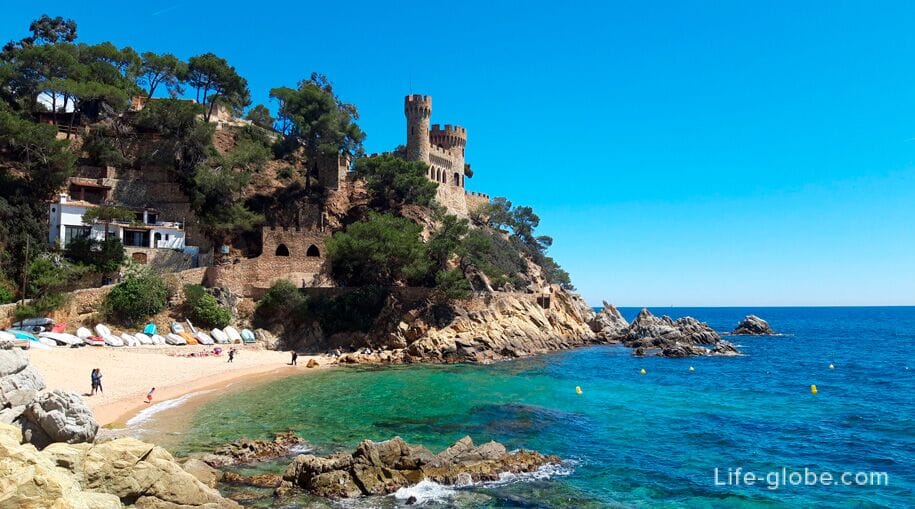
Buns - rocky Cove, located between the beaches of Lloret and Fenals, which, with Bay Bags connects the trail along the coast.
Bags well suited for fishing or Snorkelling.
In the Bay near the shore is a cafe-bar with tables in the open sea water.
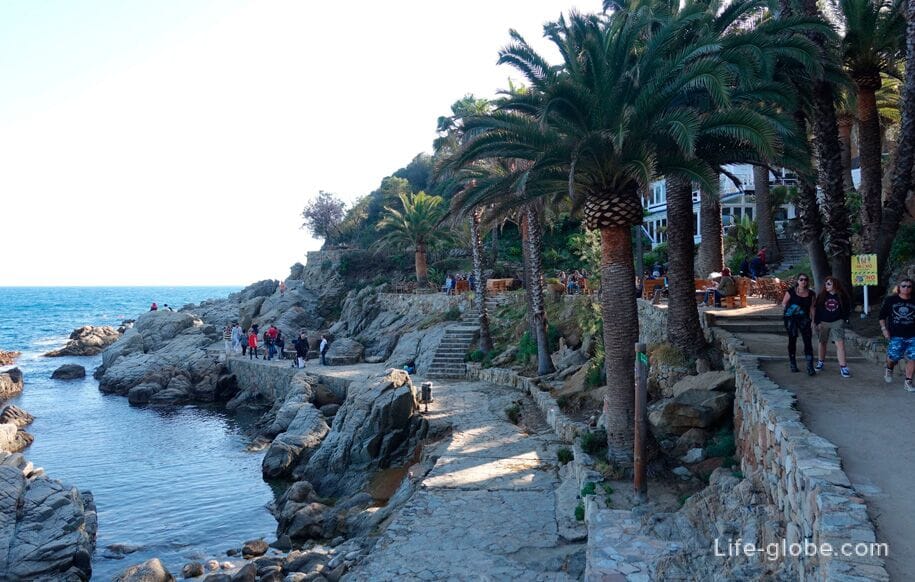
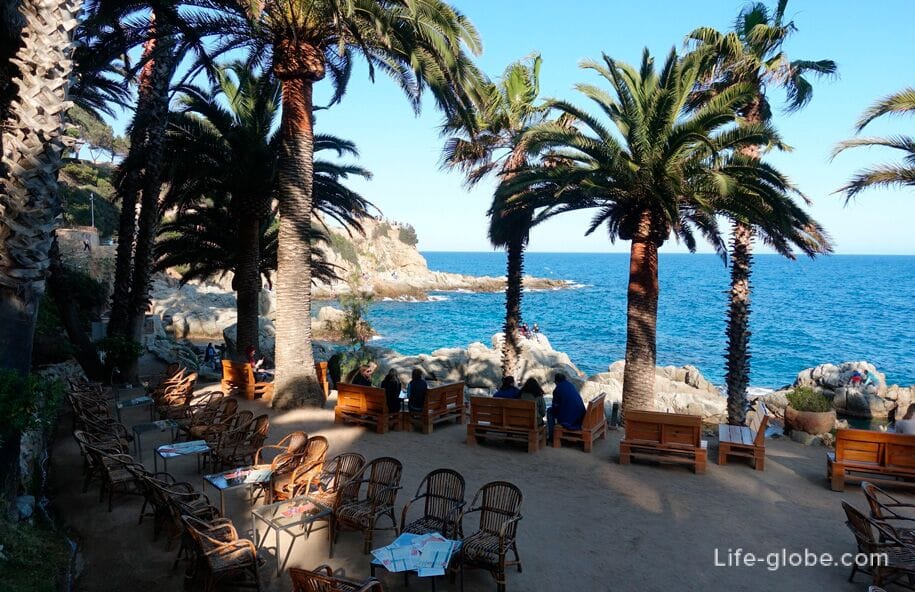
Fenals beach is the second largest and most popular beach of Lloret de Mar, on the Central beach of Lloret.
The beach is 700 meters, and its average width is 45 meters.
Convenient Fenals beach that is within easy walking distance from the centre of Lloret, but at the same time is a bit more quiet and secluded than the main beach of Lloret.
Above the line Fenals beach along the promenade where there are refreshment stands, ice cream and beverages; a few café-restaurants; sports.
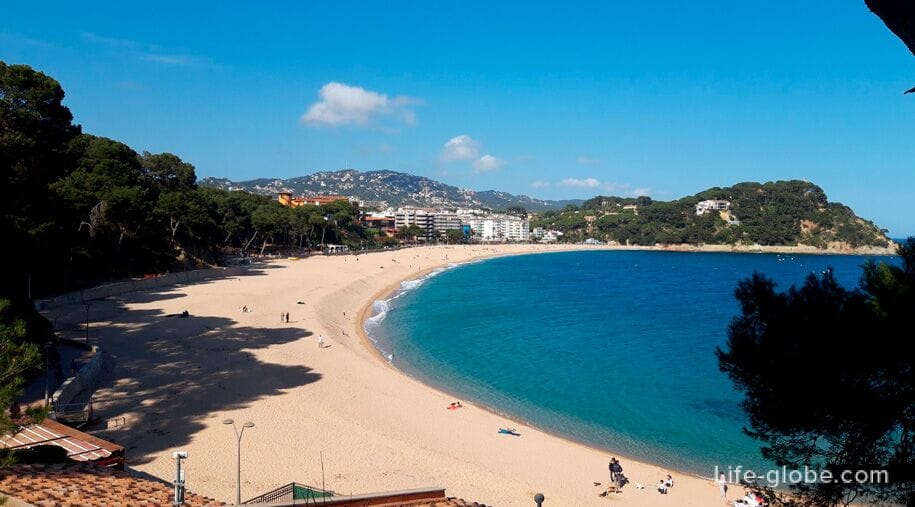
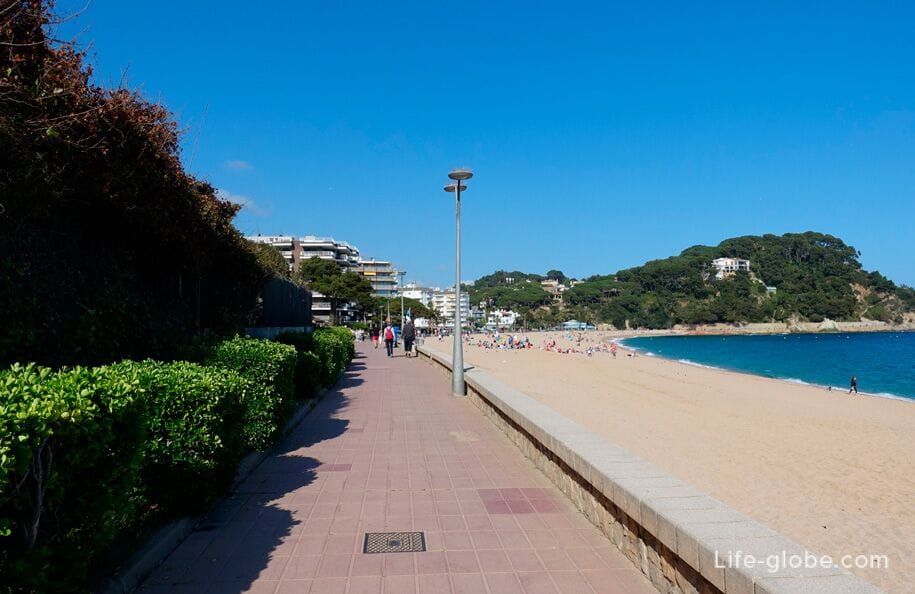
Boadella beach or Cove of Sa-Bagels - beach-Bay over the hill from Santa Clotilde gardens.
The beach boasts pristine nature, since it is located somewhat remotely from the town centre (however, the beach from the town centre can be reached on foot), between two hills, which offers beautiful panoramic views of the beach itself and the surrounding area.
The beach has a length of 250 meters and its average width is 40 meters.
On the beach are nudist.

The beach of Santa Cristina and the beach Treumal two small beach located in the Western tip of the coast of Lloret de Mar, about 3.5 kilometers from the city center, on the border with Benecom.
The beaches are a single beach strip, where through a gap between two rocks on the beach and blends in with the other.
Near the beach of Santa Cristina, on the spacious grounds of the forest, is a 5-star hotel Santa Marta with direct access to the beach.


The Canyelles beach is about 3.5-4 km East along the coast from the city centre.
The length of the beach strip is 450 metres away. On the beach is a large pebble sand light Golden color, the seawater is clean and clear. There is a children's Playground, cafe and bar.
A distinctive feature of the beach Canyelles is that on its Western side is located the only Marina in Lloret de Mar
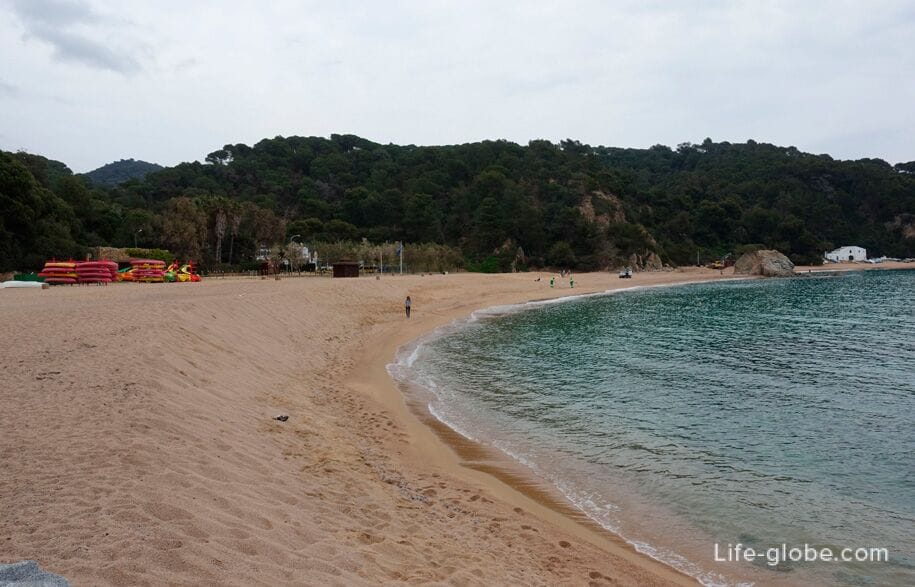
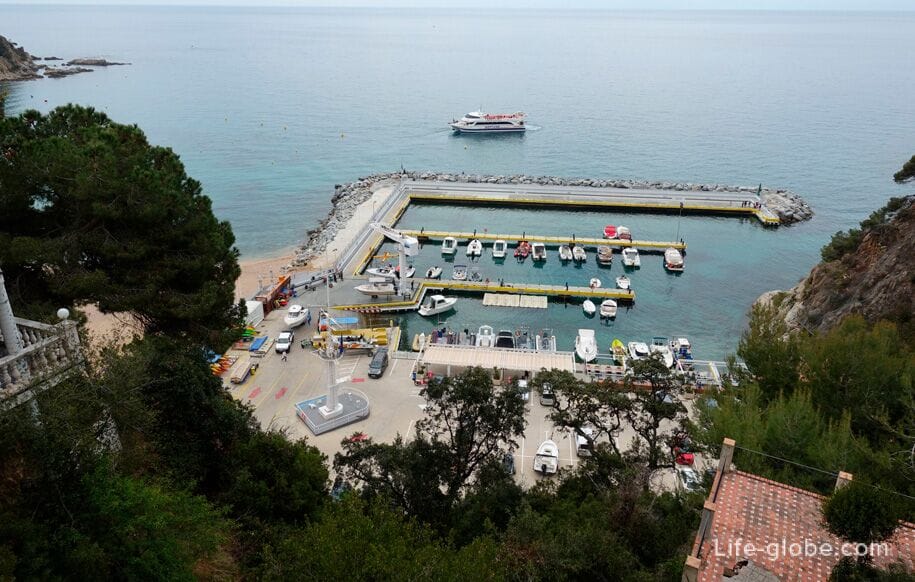
From the Central beaches of Lloret to the East stretches a rocky part of the coast, a characteristic small bays, framed by coniferous vegetation.
In the bays, the rocks, pebbles and sand interspersed with pebbles.
Bay: des Frares (Cala des Frares), Safareig d'en Sitrah (Caleta d'en Sitre Safareig), den Trons (Cala d'en Trons), sa Tortuga (Tortuga sa Cala), Cala Gran (Cala Gran) and Morisca (Cala Morisca), located on the border of the towns of Lloret de Mar and Tossa de Mar. Read more about the beaches of Lloret de Mar...
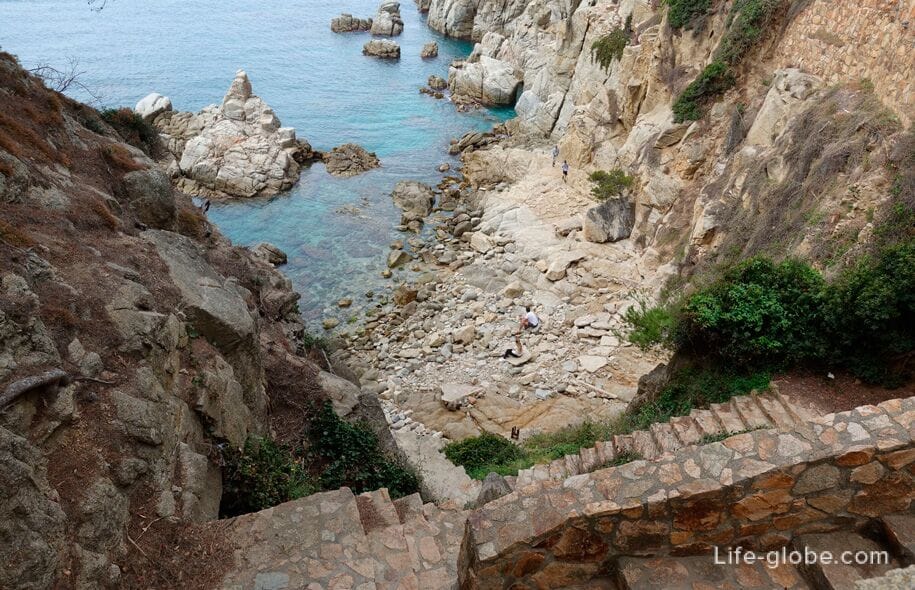
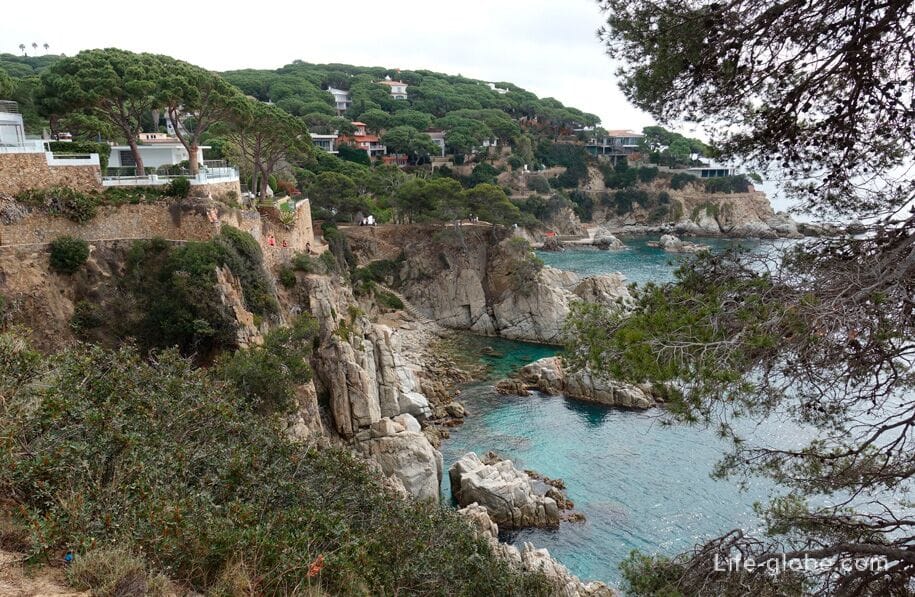
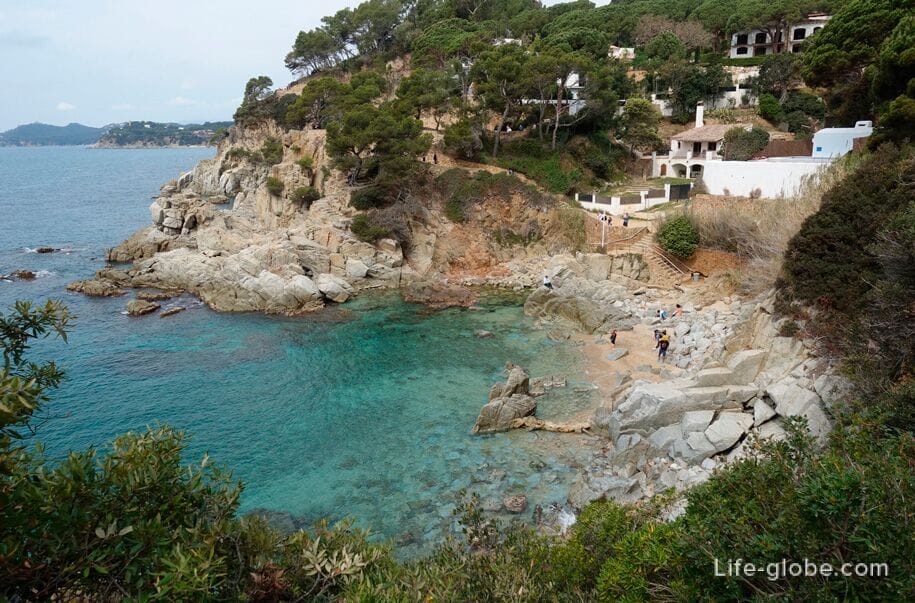
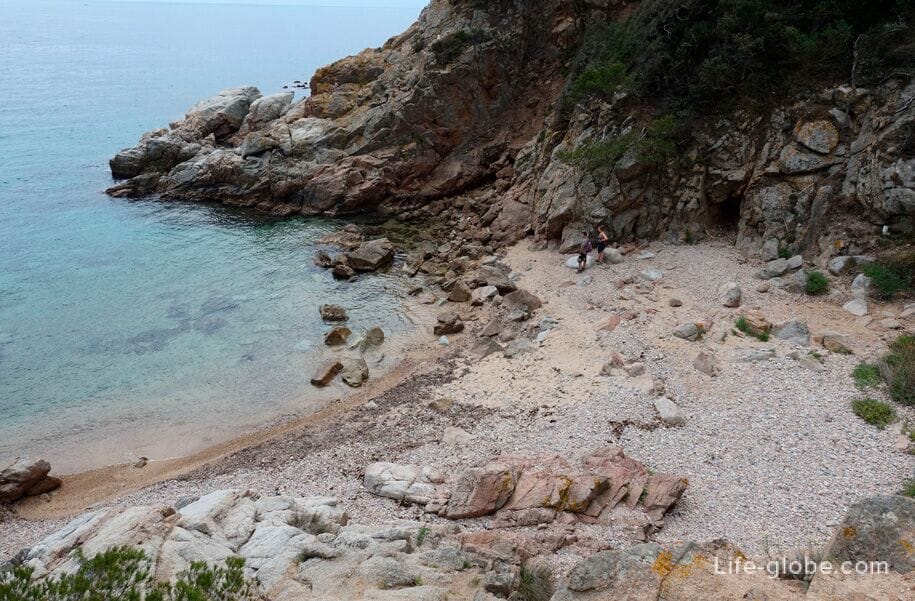
The promenade of Lloret de Mar is a long promenade, which is one of the main places for walking and recreation in the city.
Central promenade runs along the main Lloret Lloret beach and a small beach-Cove of Sa Caleta, tying these two sections of the coastline.
Along the waterfront: places to stay; observation deck; bars, cafés and restaurants; shops, refreshment stands, ice cream and beverages; children's Playground.


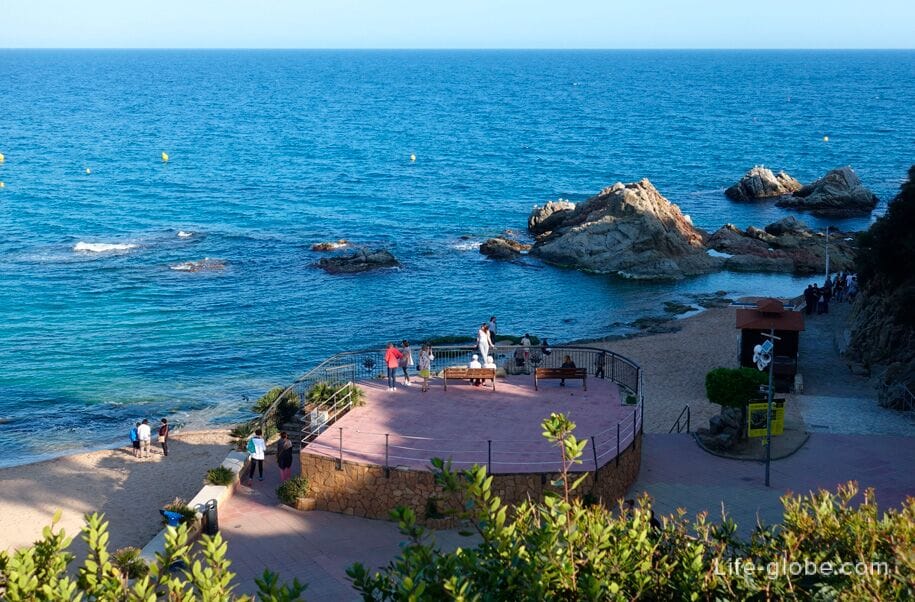
Of the attractions on the waterfront notable sculptures and monuments, which include:
- the monument "L Esguard" (L Esguard) - sculpture, opened October 15, 2000 in honor of the international meeting of supporters clubs of FC Barcelona in Lloret de Mar;
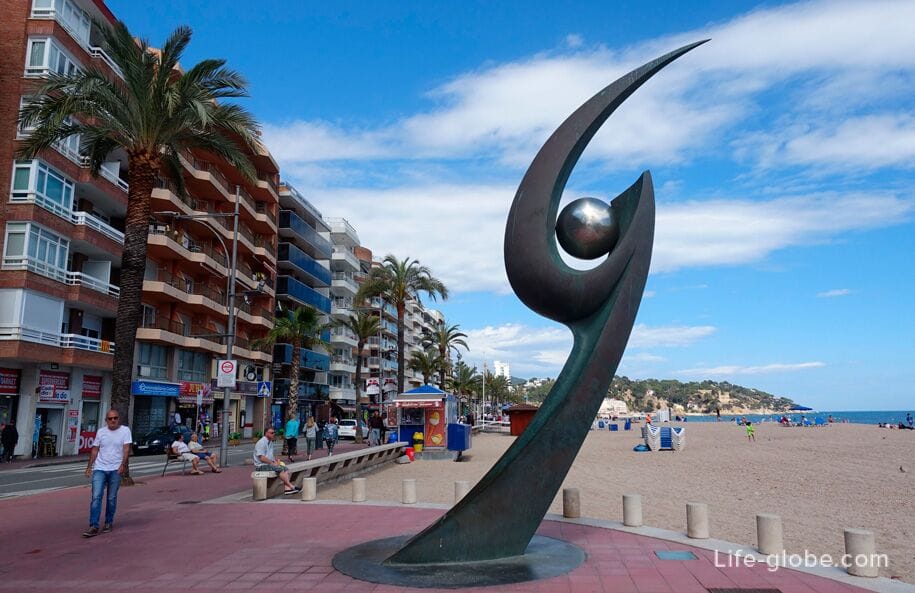
- sculpture "L'economia";
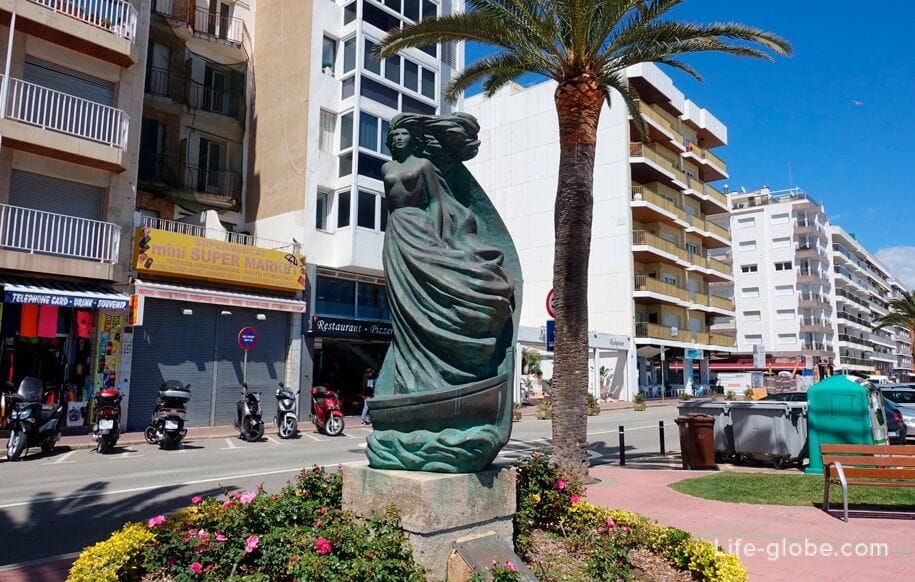
- monument "the Sardine" (Monument a la Sardana) made of metal;
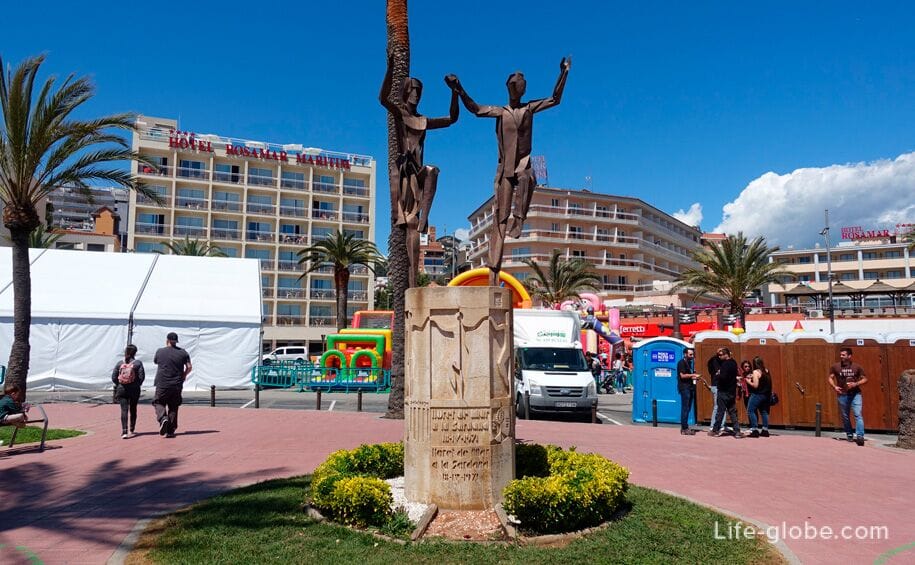
- a memorial sign erected in honor of D. Francisco Camprodon to Safotu D. Pascuale Emilio Arrieta. Read more about promenade in Lloret de Mar...
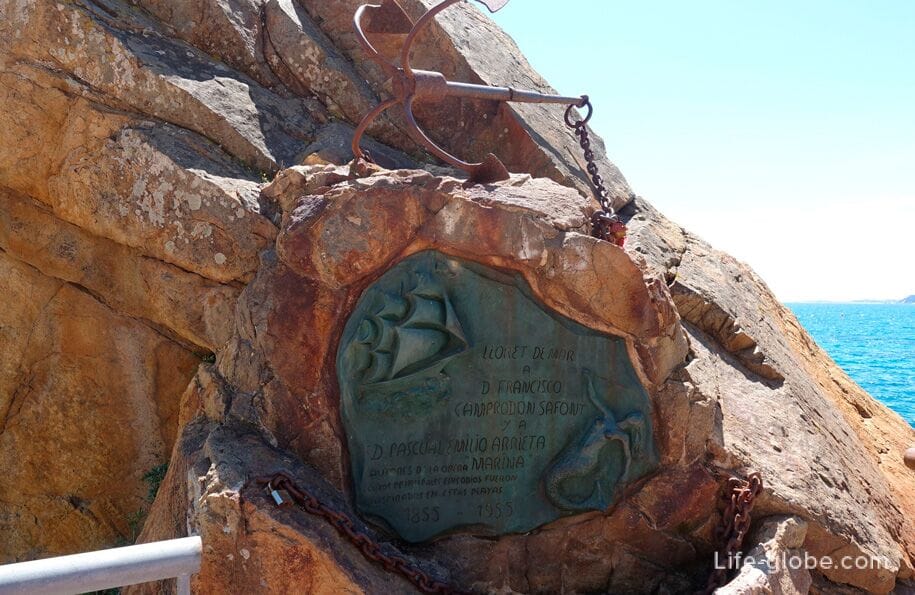
Along the Central part of the promenade of Lloret the Boulevard on Mossen Jacint Verdaguer (Mossèn Jacint Verdaguer Avenue) or Central Park (Parcul Central Lloret de Mar), which is a walking area, elongated shape, a length of about 300 meters.
On both sides of the Boulevard, high palm trees, there are also cafes and restaurants with tables under the open sky.
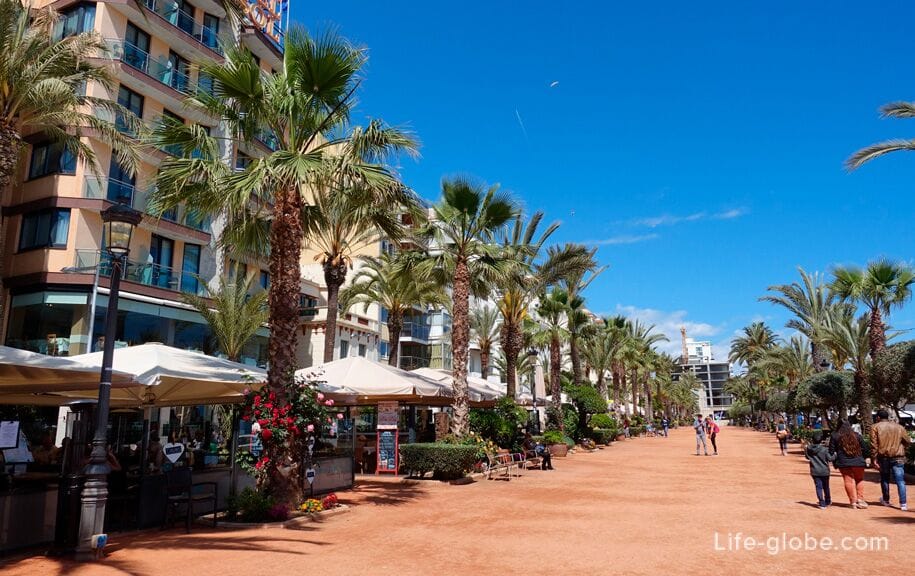
In the Park stands out as remarkable:
- Canaletes fountain (Font de Canaletes), which is an exact copy of the homonymous fountain located on La Rambla in Barcelona. The fountain was donated to Barcelona to Lloret de Mar in 1968;

- the town hall, built in neoclassical style in 1872.
The main facade is decorated with the arms of Spain, a clock and a decorative bell tower of wrought iron;
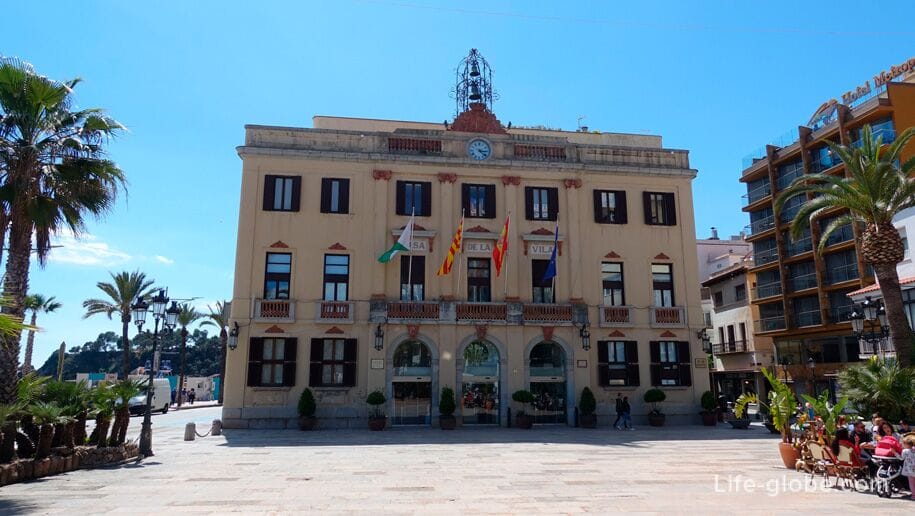
house Garriga (Can Garriga), built in 1887, which now houses the Maritime Museum Kan Garriga and tourist information centre.
The house is one of the clearest examples and traces of Indians (the"Indians"). Read more about the Boulevard Verdaguer in Lloret de Mar...
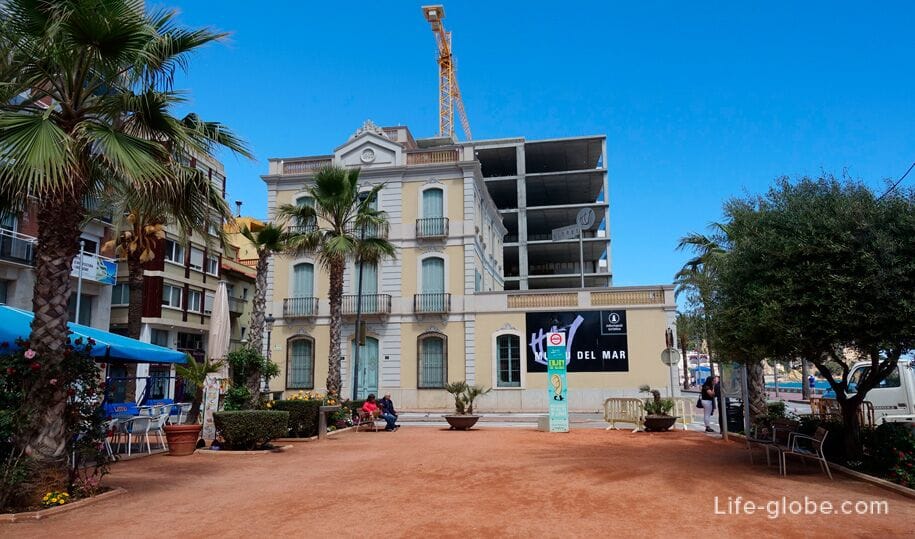

Castle on the beach - the building of the castle, which is a hallmark of the city and one of the main decorations of the Town.
The castle dominates the beach-Cove of Sa Caleta.
The castle building is a house built for industrialist Narcisa Plaza of Girona. The house project was designed in 1935 by architect from Girona by Isidore of Boskom. However, the work was completed only in the forties, after the end of the Spanish civil war.
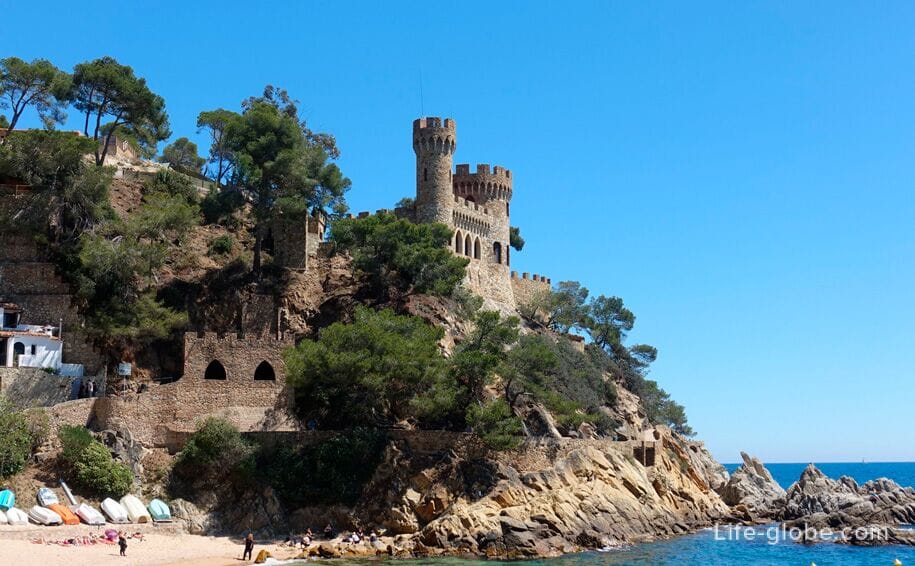
Touro Clan and the site, where once lived the Iberian settlement located just above the Chateau on the beach.
Excavations Dating back to the 3rd century BC On the hill is an Iberian house, restored using materials and construction methods of the era. In addition, the territory of the Touro Clan has panoramic views over the Bay of Lloret.
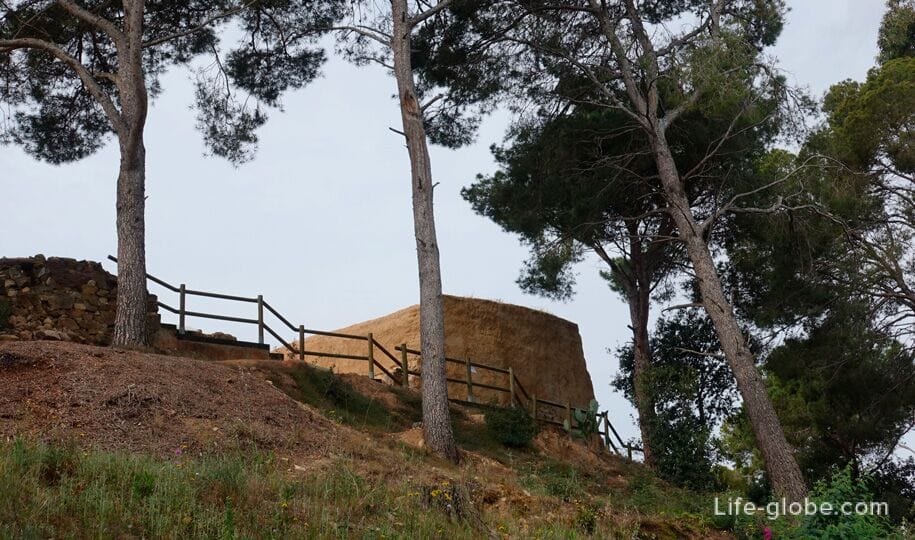
The castle of Sant Joan or the tower of St. Juan - the remains of a castle located on top of a hill that separates Lloret beach and Fenals beach.
The appearance of the castle of Saint John is inextricably linked with the appearance of the Town. The castle was built in the early 11th century.
In 1805, the bombing of the tower of the English fleet, fortified the building was destroyed.
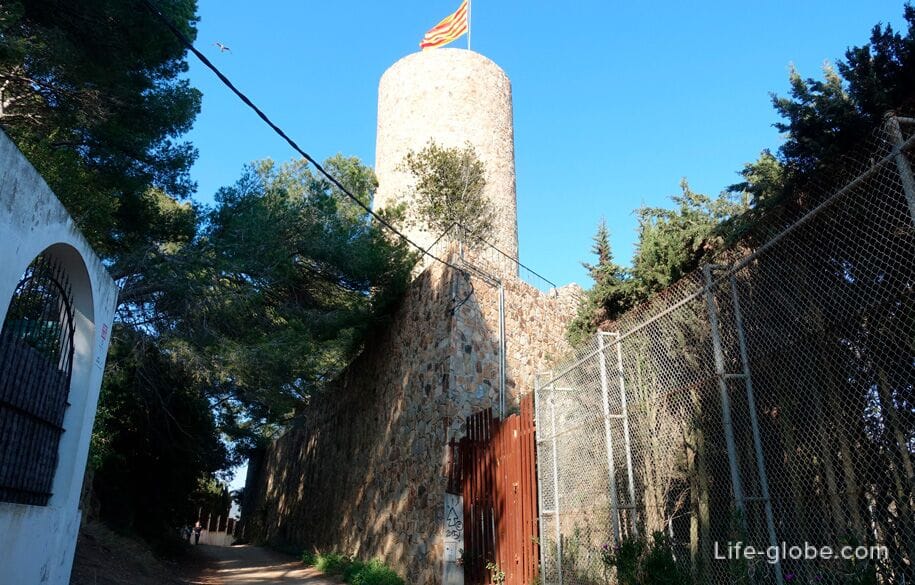
Historic Santa Clotilde gardens are located close to the beach Boadella, on the cliff, with panoramic views of the sea.
The gardens are divided according to the example of the gardens of the Italian Renaissance and is an example of a movement "noucentisme" in Catalonia, one of the most prominent representatives of which was Eugene d'or.
The entrance to the gardens is paid.
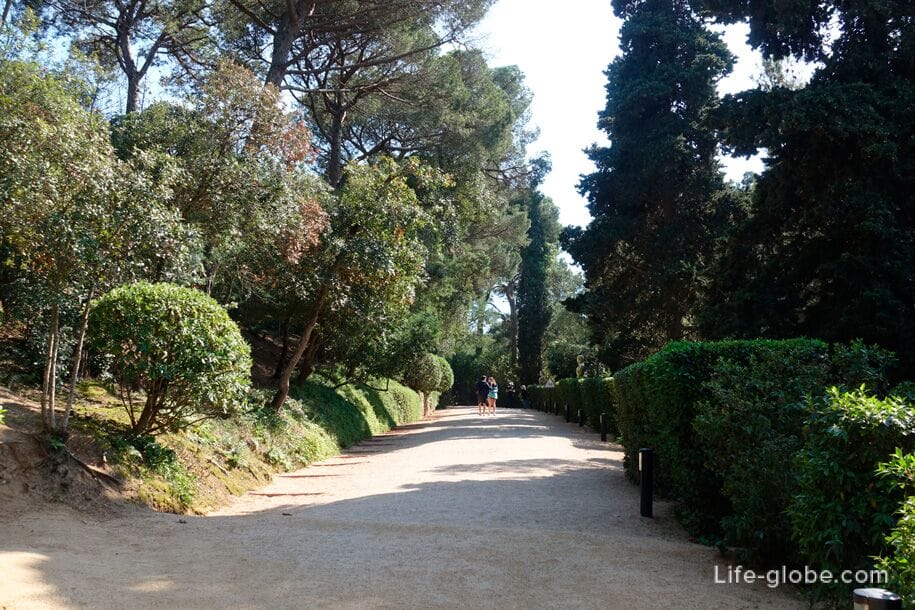
The sculpture "fisherman's Wife" (the virgin of Lloret) is the most famous and visited monument in Lloret de Mar.
The bronze sculpture stands on a rock, near the Western end of Lloret beach, has a height of 2.4 meters, and it represents the figure of a woman who fixed his gaze to the sea.
Near the monument is the eponymous viewpoint of the Mariner (Mirador Mujer Marinera), with panoramic views of the main beach of Lloret and the sea water.
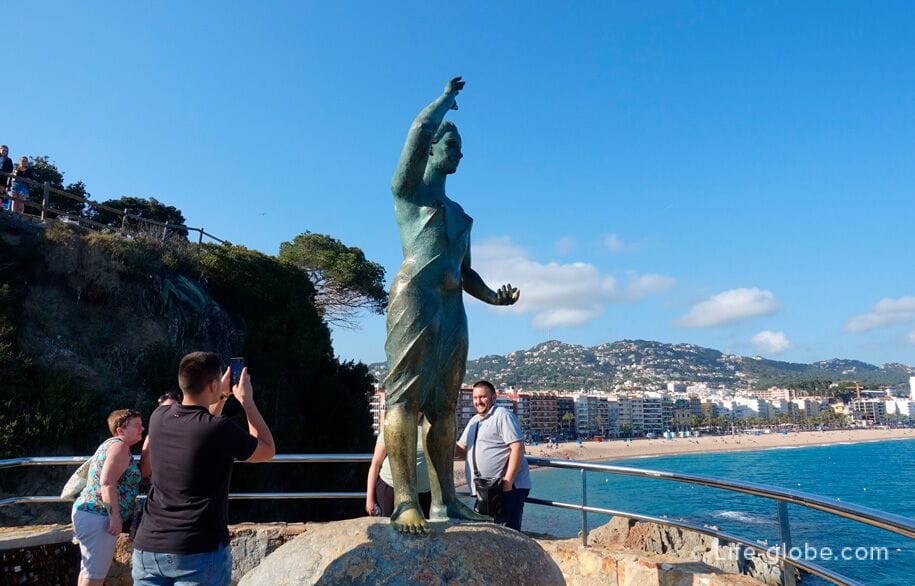
The project of the cemetery was developed in the late 19th century.
The majority of sculptural gravestones and mausoleums, now representing architectural and historical interest as it provides the opportunity to meet with the funerary art of the modern age belong to the 20th century.
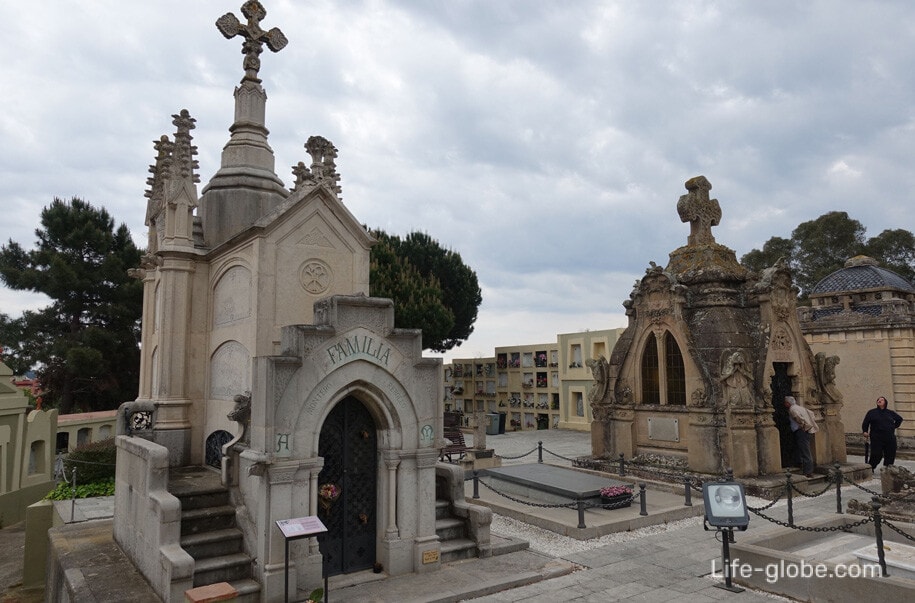
The house is located in the heart of the old part of the city (the tour is held on record).
Kan Font, also known as Kal-condé or Kan-Piet, - apartment house, built in 1877 in the art Nouveau style.
The house includes a basement, ground floor, two floors and attic. In the center of the building is a staircase linking the rooms, located on different floors.
The facade of the building made in the neoclassical style, which enjoyed great popularity during the period of construction of the house.
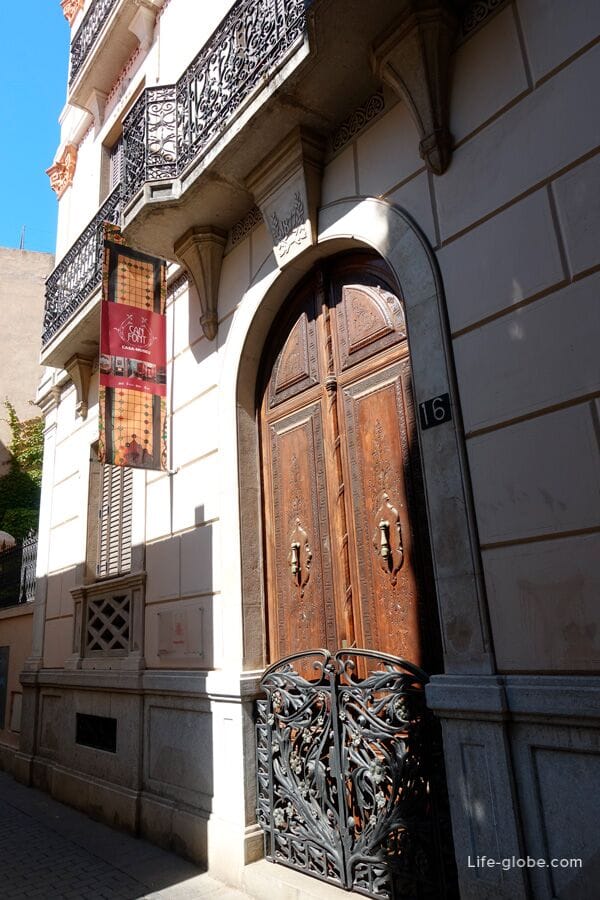
The Church of Saint Roman or the Church of San Roma is one of the most famous buildings of Lloret, located in the city centre, at plaça de l Església (Plaça de l església).
The original Church was built in Gothic style with elements of fortification from 1509 to 1522 year. Subsequently, in the 16th - 18th centuries, were erected and other parts of the building, including in a modernist style, in particular, outbuildings, side chapels, frescoes, saltany the image of the main altar.
Among the works of modern art, it should be noted stone sculpture of the virgin of Loreto and the wooden sculpture of Christ. Read more about all the sights in Lloret de Mar...
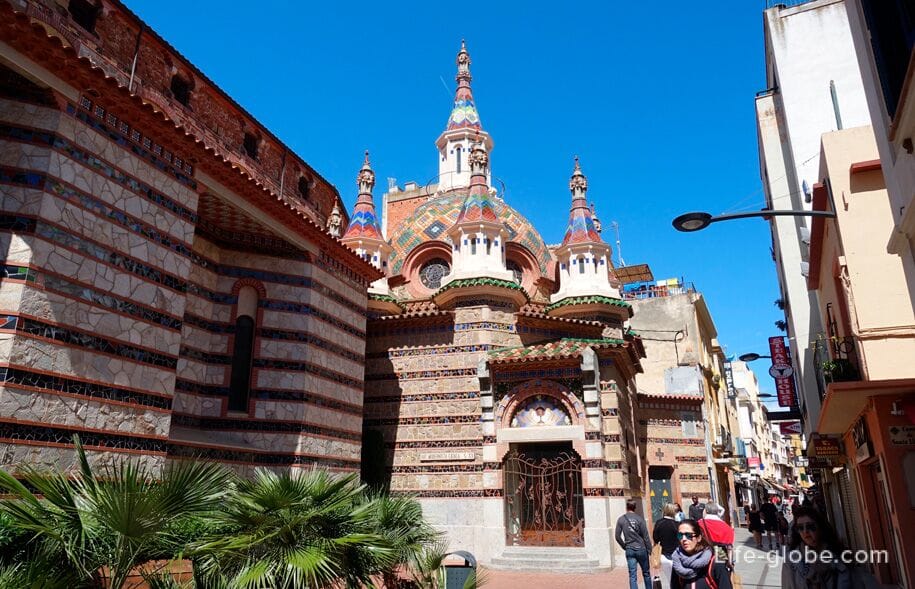
The main tourist core of Lloret de Mar is concentrated near Lloret beach and close itself - into the city.
In this part of the Town located: Central promenade, the old centre and the streets along which the abundance of cafes, restaurants and bars.


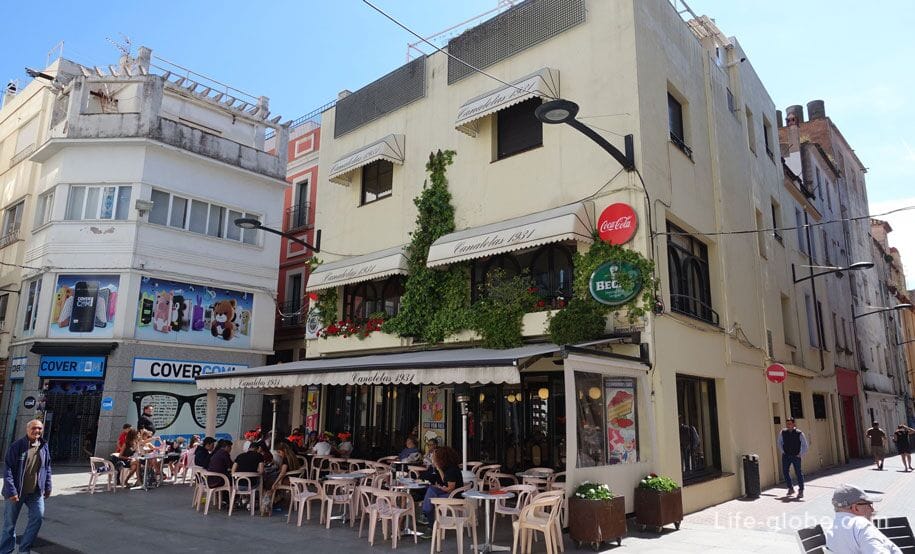

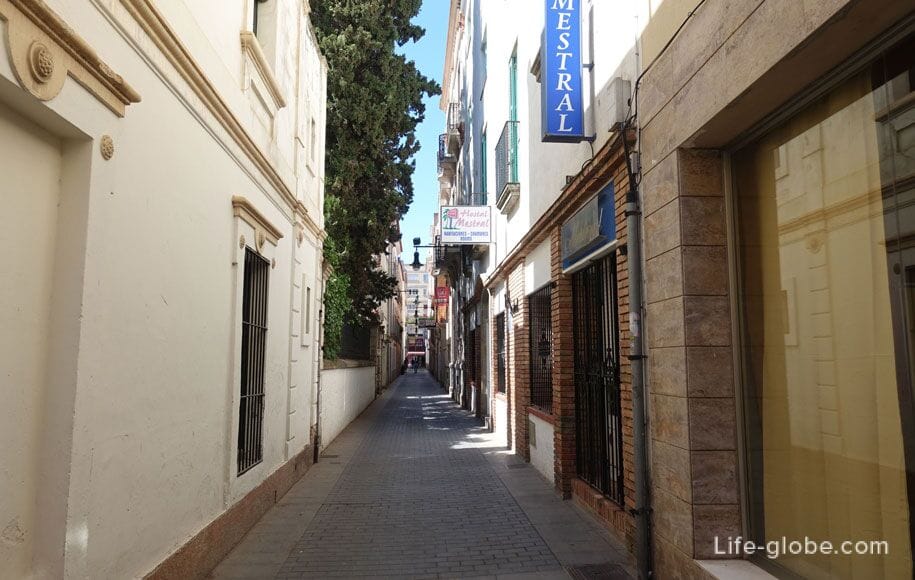
Street Of Marles Vierraden (Av. Just Marlés Vilarrodona), which is one of the Central streets of the Town. The street takes its origin from the Western end of Central beach of Lloret and goes into the city.
Along the street and in close proximity thereof, on adjacent and parallel streets, hotels, shops, cafes and night clubs.
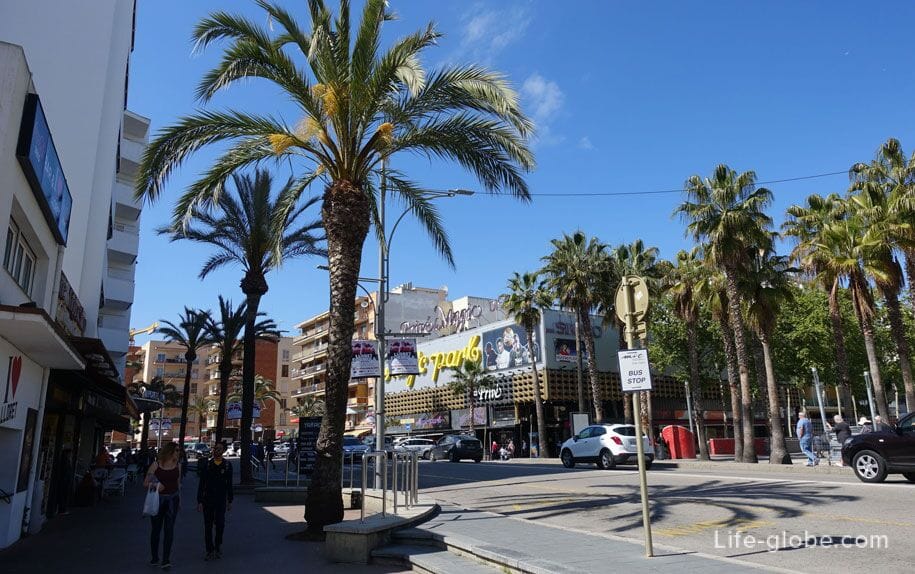
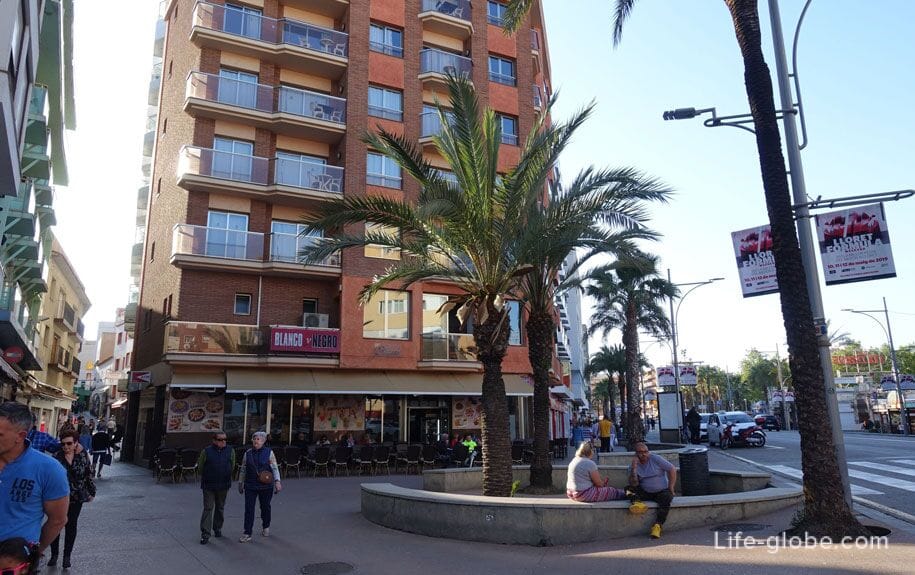
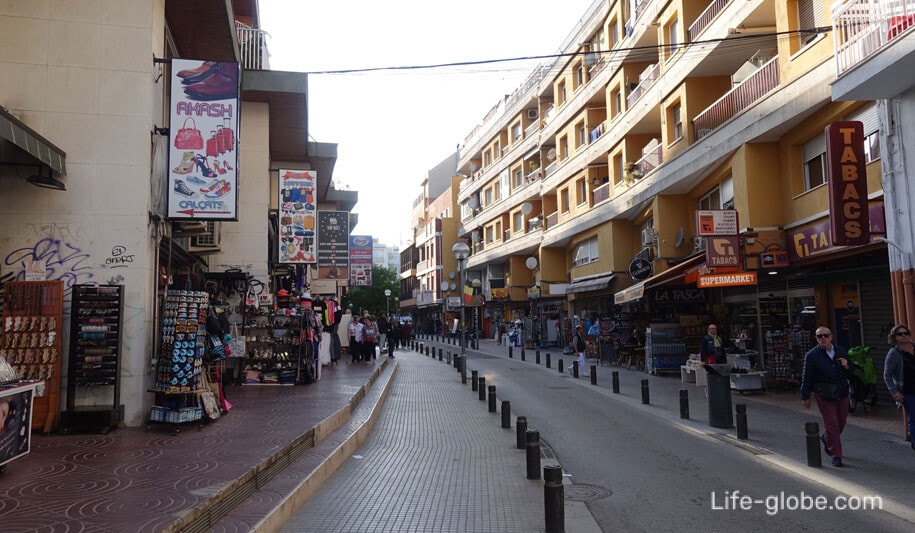


This part of the Town is the most happening place in the city where the evening is full of life, whereas in the more remote areas of the city in a very calm and measured atmosphere.
Cycle along the Central and Western beaches of Lloret, at the same time to visit some sights of the city, the Botanic gardens of Blanes (garden piña de Rosa /Jardin Pinya de Rosa and Marimurtra garden / Jardin Botanic Marimurtra) and drive to the neighbouring resort of Blanes on the tourist train (minivan).
The website of the tourist train (route, stops, schedule and rates).
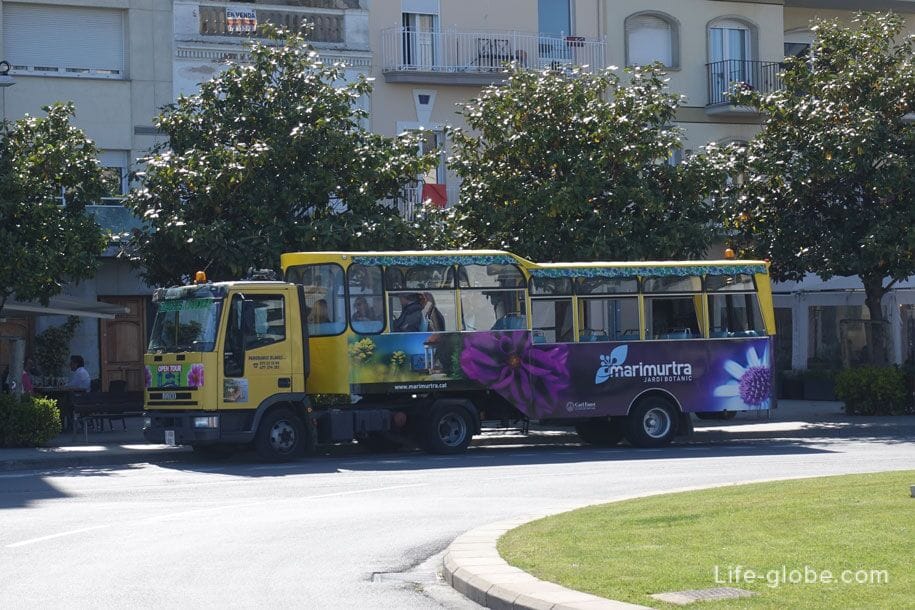
From Lloret de Mar you can take one of the sea cruises (sea-walk). For example, go for a walk in the open sea, fishing or visit nearby resort towns, such as Blanes, Tossa de Mar, Malgrat de Mar, Calella etc.
Information on all walks, as well as the schedule and prices can be obtained in the ticket offices on the waterfront near Lloret or Fenals beach.

One of the attractions in Loera may be a walk along the West or East coast city, in the former patrol path.
Patrol paths - paths that once were the patrol routes. The trail ran along the coast or deep into the forest.
In Lloret especially popular are the two ex-watchers of the trail, now Hiking trails, running along part of the coast of the city.
Trail beach Lloret - Fenals beach. This trail starts from the Western end of Lloret beach and runs along the coast, past the sculpture "fisherman's Wife", rocky Bay Bans, tower of San Juan and goes to the beach of Fenals. Further on trails and partly through the town you can walk to the centre of Blanes. Read more about watch trail...
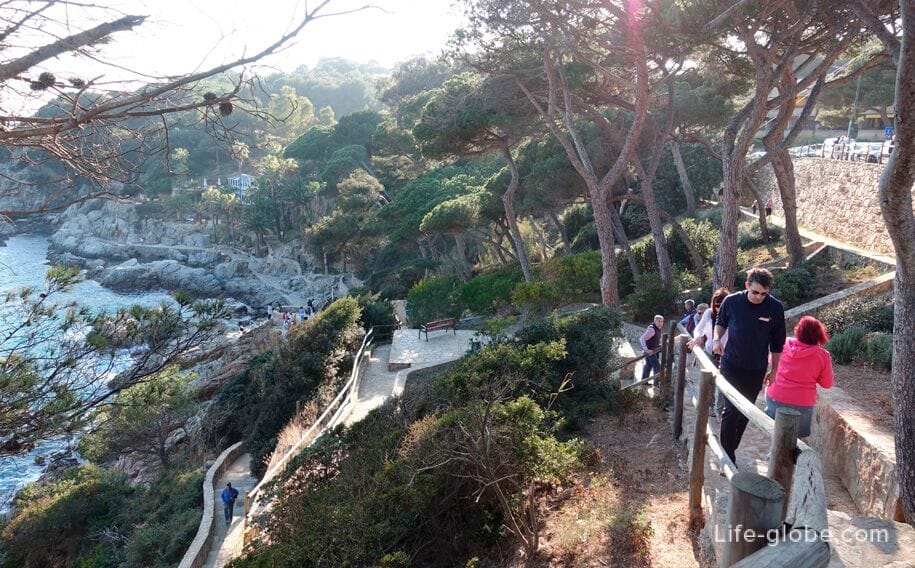
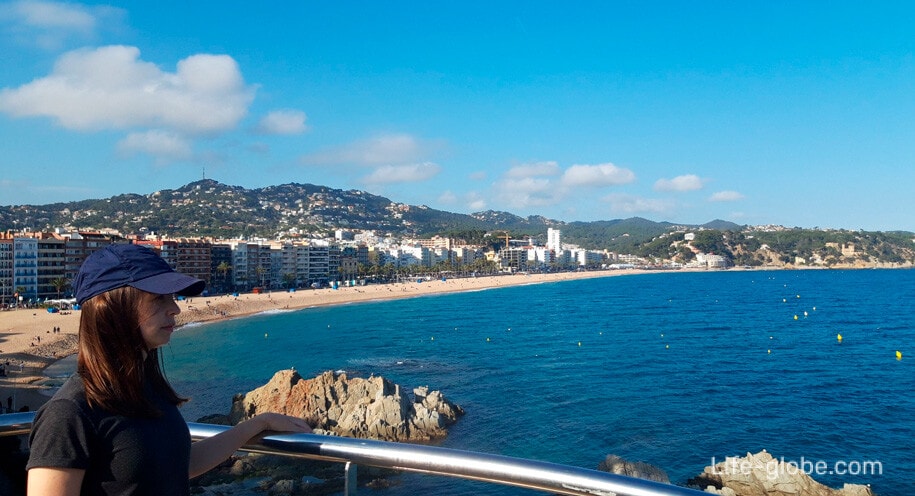
The path of the beach, Sa Caleta Cove den Trons. The trail starts from the Eastern end of the Sa Caleta beach, passes by a castle on the beach, then goes WOL rocky coast and stretches to the Bay of Trons. Next, he delves into the city, you can walk from Canyelles beach, and there, on the forest trails, walk to the center of Tossa de Mar. Read more about the trail and the route from Lloret to Tossa...

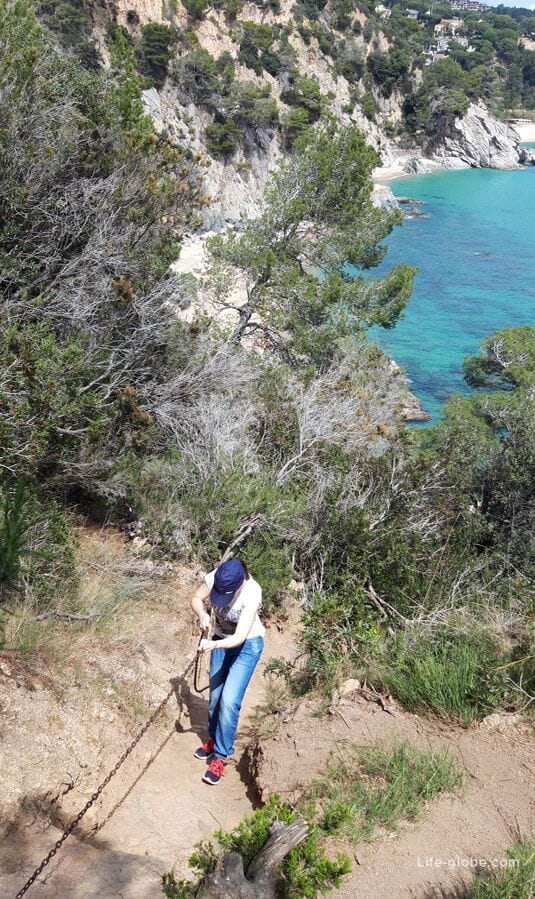
For the purposes of entertainment in Lloret de Mar you can visit: Park gnome (Gnomo Park), water Park Water world (Water World), small parks with children's rides Sould Park and Magicpack (Magic Park Lloret) and the Gran Casino Costa Brava (Gran Casino Costa Brava).
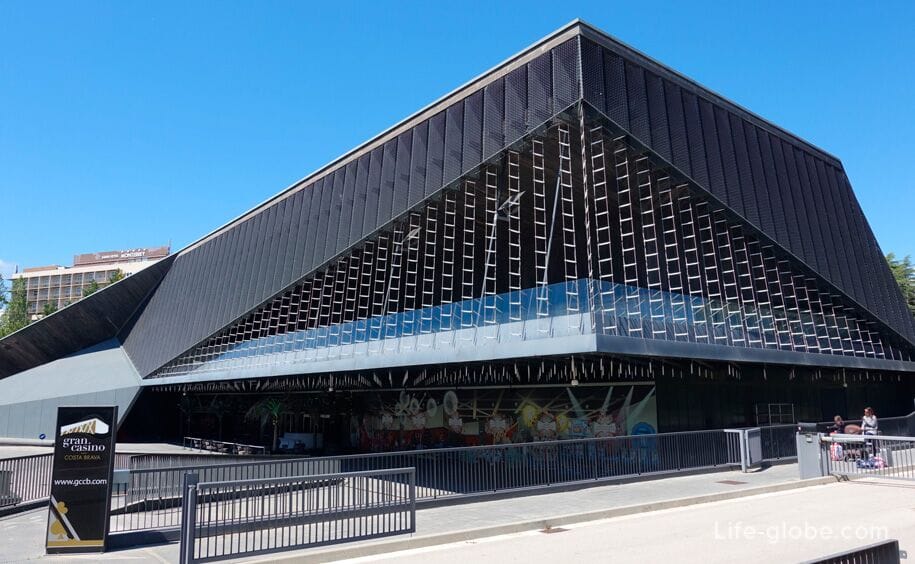
A vacation for the whole family prepared Marineland, where Dolphin show, opened a water Park and bird Park "Jungle adventure".
The Park is located 10 kilometres from Lloret de Mar, with Benecom. The Park's website.

One of the largest castles of Catalonia, the montsoriu castle, whose history dates back to the year 1002.
The castle is situated in a picturesque woodland setting, on a hill within the natural Park of Montseny, about 40 kilometers from the centre of Lloret. The castle site Monthsary.
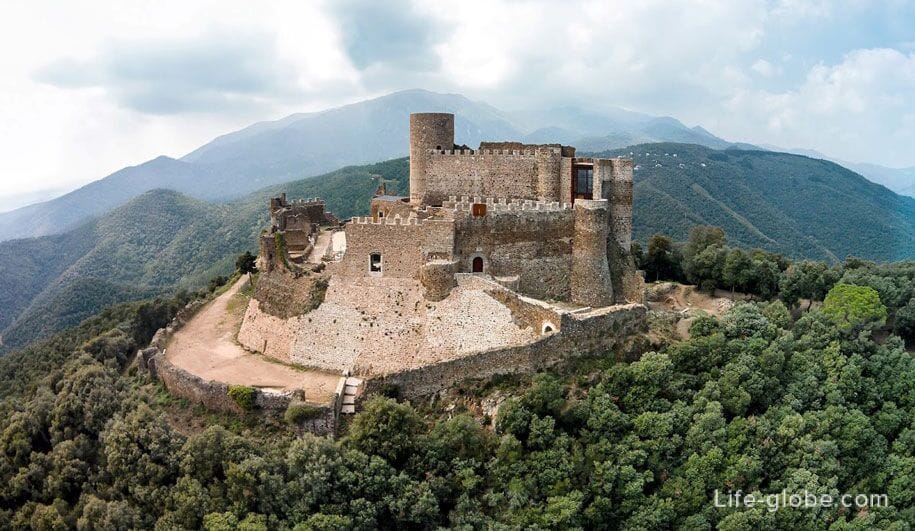
From Lloret de Mar you can go to neighboring towns and resorts, for example:
- resort town of Blanes, which is considered the "Gate of the Costa Brava";

a small picturesque resort town of Tossa de Mar , with its famous fortress (the castle of Tossa de Mar), which is a complex of medieval buildings enclosed by a defensive wall with watch towers;

- the provincial capital - the city of Girona, with its impressive historical centre;
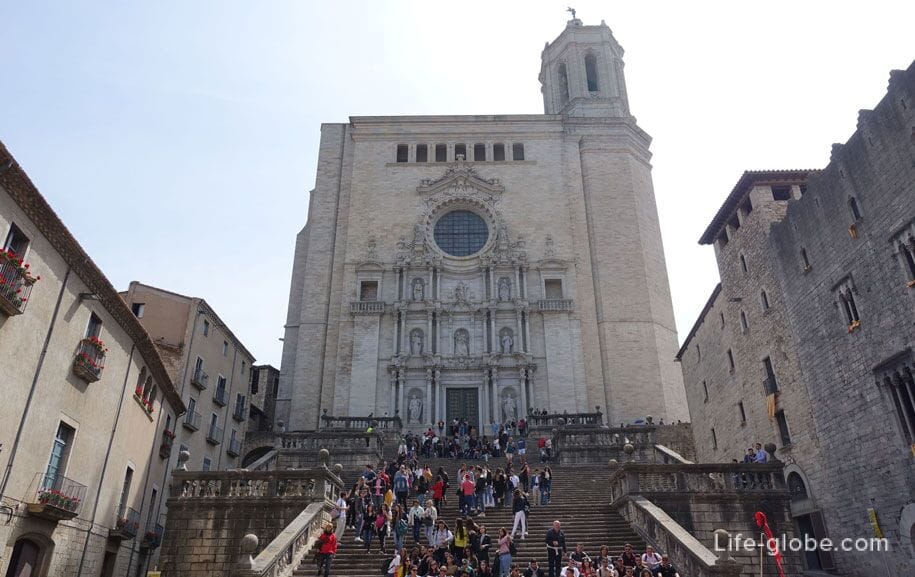
- the Catalan capital - the largest and, without doubt, incomparable Barcelona, with experience producing creations of Gaudi.
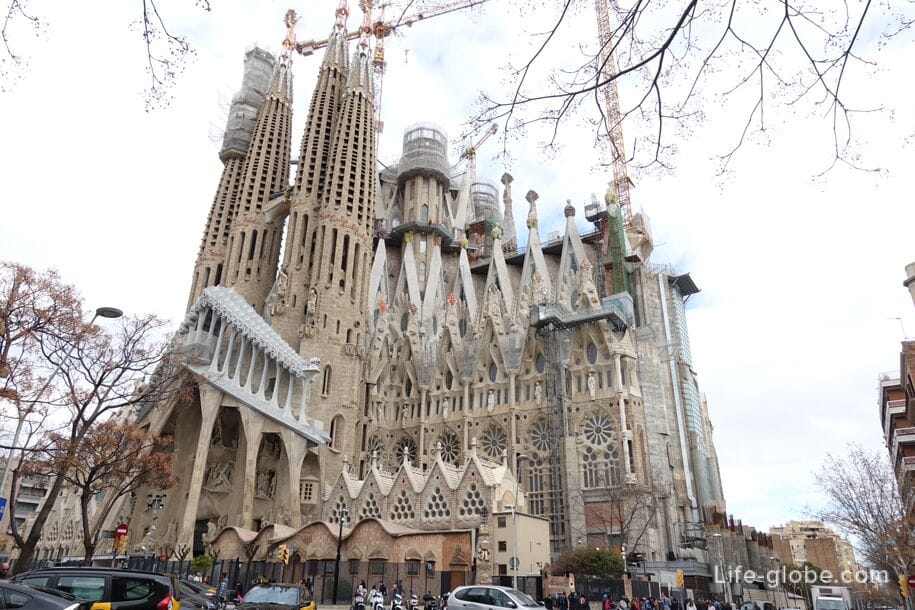
From excursions to Lloret de Mar and from Lloret de Mar, you can go on a catamaran cruise, a kayaking and snorkeling tour, go diving, visit a water park with an included transfer, go on an excursion tour to Tossa de Mar, Barcelona or Mount Montserrat, etc.
Within the centre of Lloret de Mar there are a lot of small shops and supermarkets.
Larger supermarkets Lloret:
supermarket Spar (Spar), located in the Western part of the main beach promenade of Lloret;
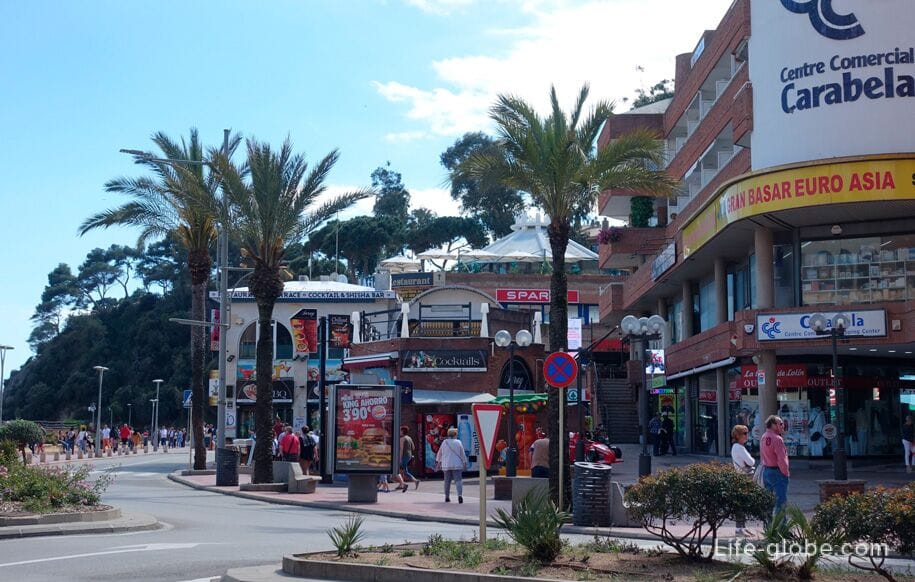
- Spar Express (Spar Express), located at Av. Just Marlés Vilarrodona, 17;
supermarket Lidl (Lidl), located at the intersection of the streets Avinguda de les Alegries and Carrer Camí de Mas'arboç;
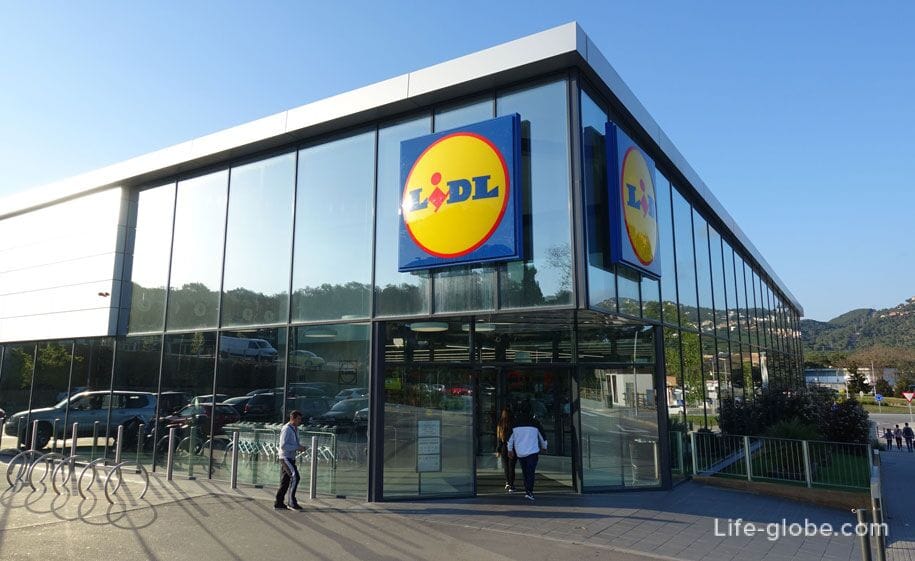
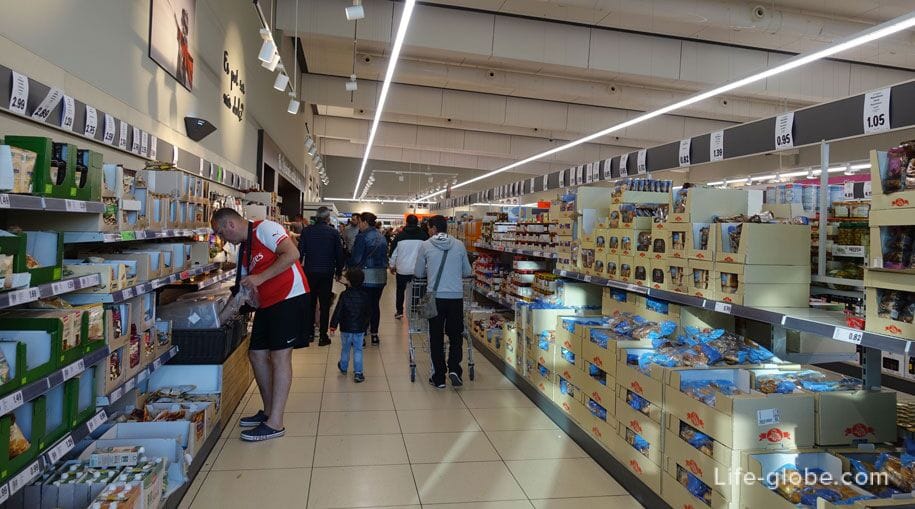
hypermarket Esclat, located in the shopping center PortaLloret, next to the supermarket Lidl;
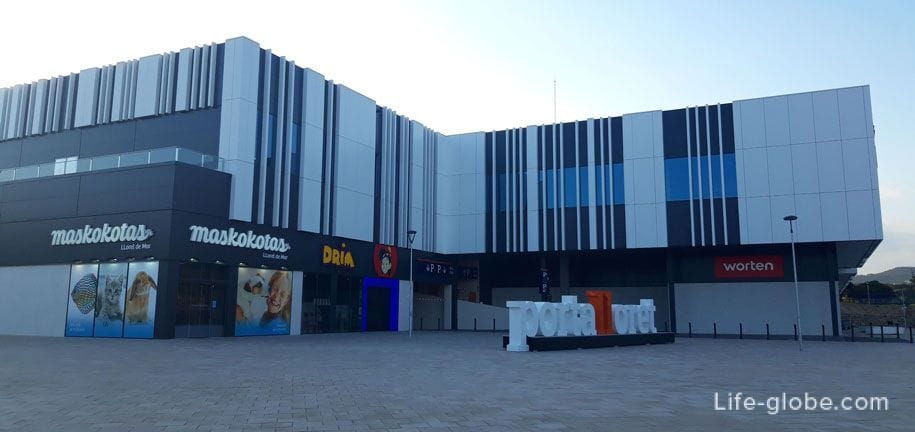
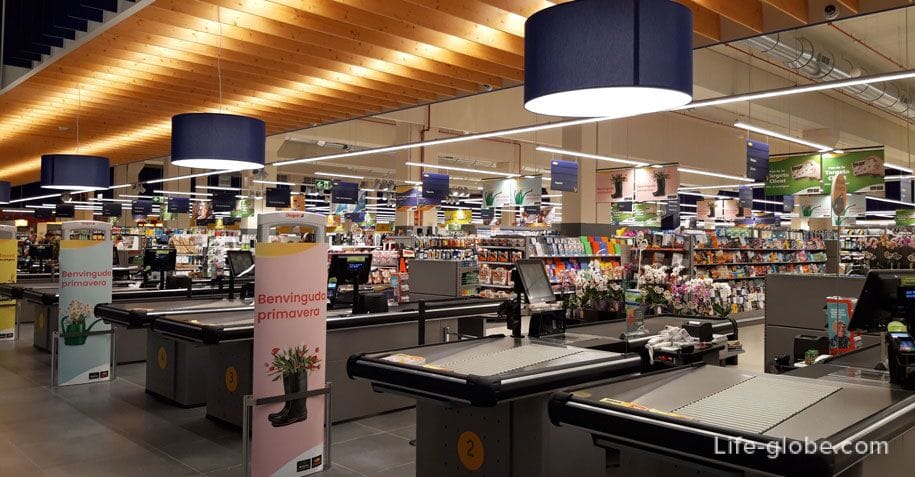
supermarket Mercadona (Mercadona) is located at the address: Lloc Rieral, 31;

- a supermarket chain DIA (DIA). Address: Carrer de la Riera, 60, 61; Carrer del Poeta Lope Mateo, 11; Carrer Joan Baptista Lambert, 25; Carr. Blanes, km. 10, 400.
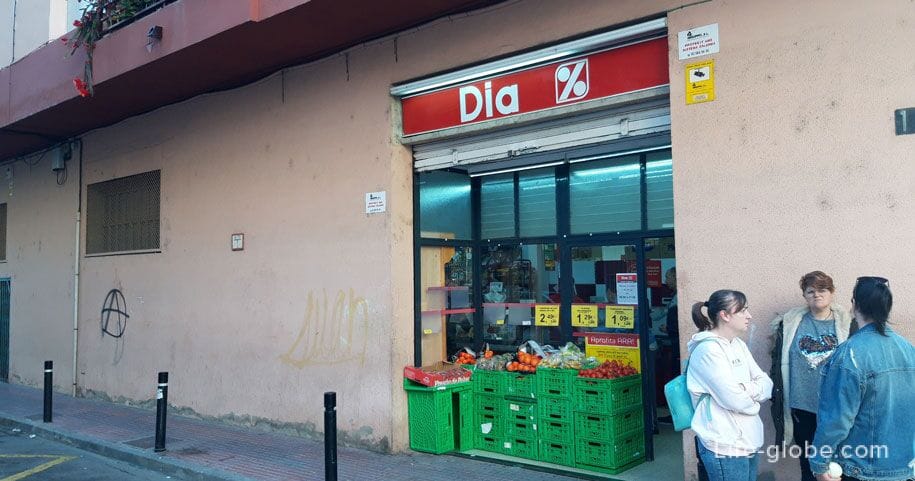
LloretBus and is a regular urban transport service of Lloret de Mar with a total of 5 regular lines.
Bus routes connect the city centre with the main attractions, as well as educational and medical centres, sports facilities and shopping areas.
The cost of a single fare € 1.35. Map T10 - 10,60 euros. Lines of buses, routes, schedules, stops and ticket prices can be found at the official website of the carrier.
A schematic map of the lines of public buses to Lloret de Mar
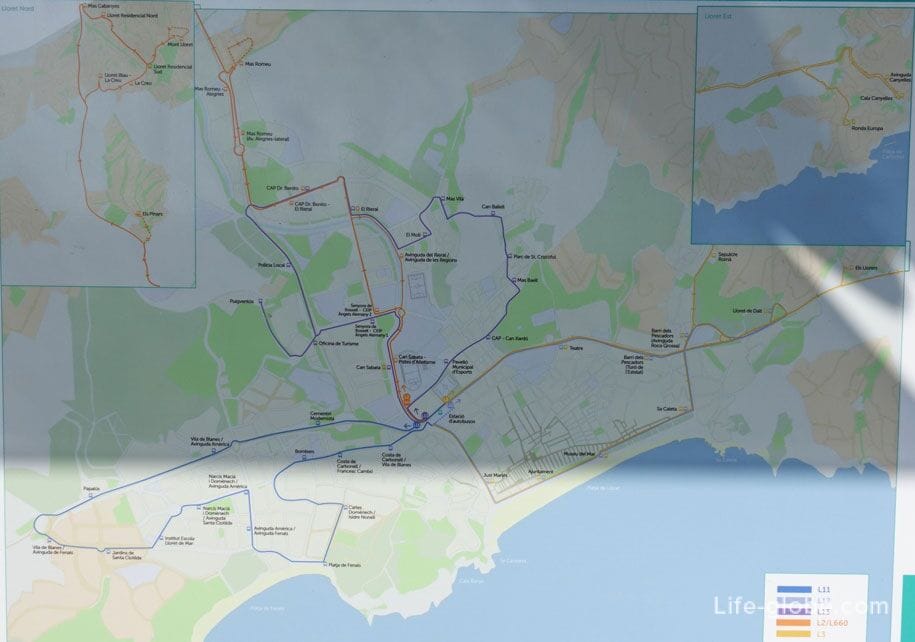
The choice of accommodation in Lloret de Mar are very diverse, ranging from budget guest houses, apartments and camping, ending with a 5 and 4 star hotels, holiday homes and villas located near the beaches and the historic center of the city, and more remotely from those.
All accommodation in Lloret de Mar, you can view and book here
In the city of Lloret de Mar airport. The nearest international airports are Girona and Barcelona.
The airports of Barcelona and Girona serve local and international flights, including budget airlines (low-cost). As a result, you can get from many European cities to Barcelona and Girona at very attractive prices. Cheap flights to Spain...
To reach from the airports and centres of Girona and Barcelona to Lloret de Mar and Lloret de Mar in airports and centers, respectively, it is possible:
Taxi/Shuttle Service
To reach from the airports of Barcelona and Girona in Lloret de Mar more convenient and faster than a taxi. Book a taxi/Shuttle service is possible in advance, even from home. At any time of the day, at the airport, you will meet your driver with a sign, which will be written your name and surname. For taxi is enough to tell us your flight details!
Car
The most convenient way to self-move to Spain is a car. You can rent a car in advance, even from home, the car will be waiting for you upon arrival.
Public transport
From the airports of Girona and Barcelona directly to Lloret can be reached by bus.
From the centers of Girona and Barcelona to Lloret can be reached by buses or trains (trains) and bus.
Read more about how to get from Barcelona to Lloret (airport and downtown)...
Read more about how to get from Lloret to Girona (airport and downtown)...
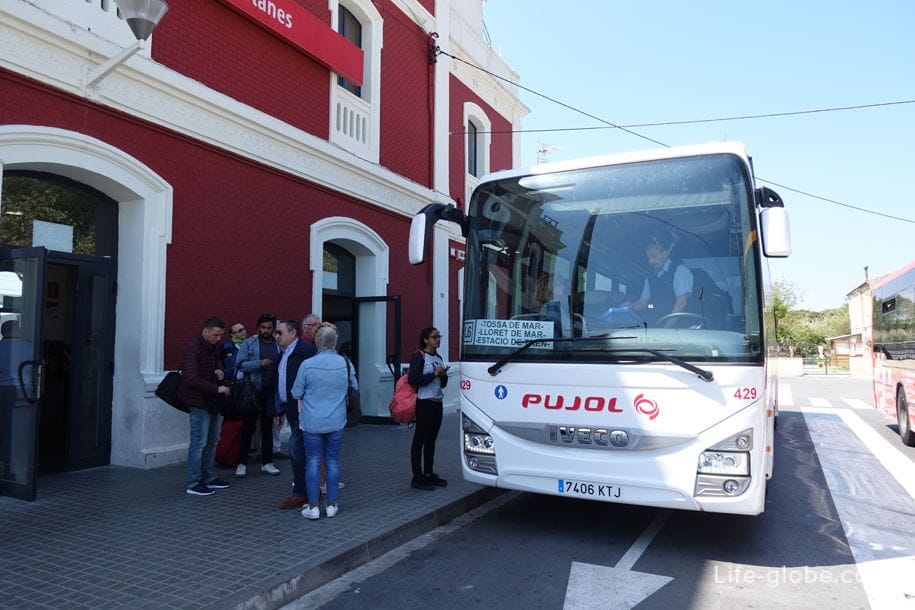

From Barcelona, Girona and Lloret France, Italy and some other European countries can be reached by bus FlixBus. View all destinations of the buses and buy your ticket here...
Where to stay in Barcelona! All accommodation facilities in Barcelona (hotels, apartments, hostels, etc.) can view and book here
Where to stay in Girona! All accommodation facilities in Girona (hotels, apartments, hostels, etc.) can view and book here
Spain is part of the Schengen area. To visit the country, you may need travel insurance.
Spain is part of the euro zone, because the country's currency is Euro (€). Both cash and bank cards are accepted for payment in many shops, cafes and restaurants.